continued from above
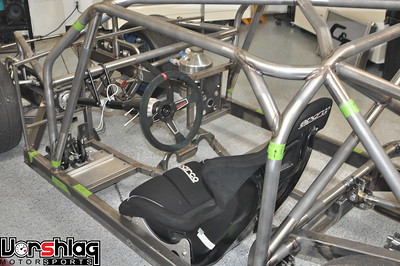
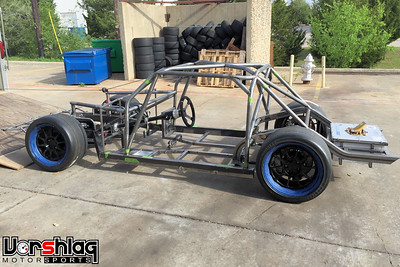
Ryan marked the chassis with tape and arrows showing which areas of the cage were close to the body and that we wanted finish sanded, painted and clear coated. The top of the cage and anything that comes close to the unibody skin.
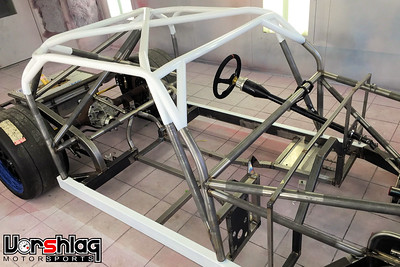
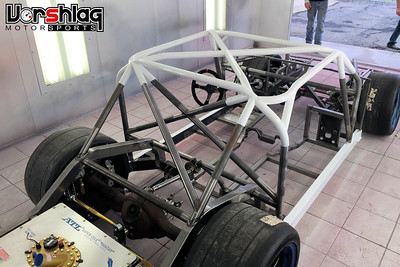
They did exactly as we asked and painted just the sections of the cage and chassis that we marked. As you can see the lower, outer frame sections were also primed and painted. These will be hidden inside of the outer skin of the rockers on the unibody. The lower rockers were "pocketed" to fit around the frame rails earlier, and those pockets on the unibody were finish painted as well. Nobody will ever see those areas, but they won't be bare metal dripping rust later, either.
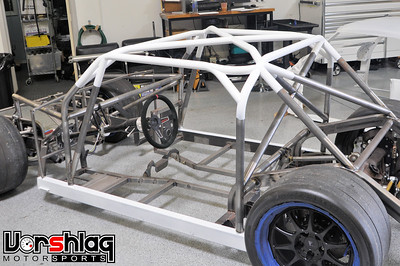
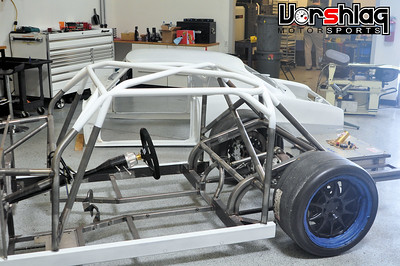
At this point I had picked up the semi-painted rolling chassis and it and the unibody were ready to go back together for the last time. Once these were joined they wouldn't be coming apart again. I will wait and show that chassis-to-body merge next time.
NEW SEAT ORDERED
Choosing an appropriate, safe, and good fitting racing seat is one of the most critical choices in a race car build. This is where 90% of your tactile feedback with the car comes from - when you are strapped into a form fitting, fixed back racing seat. A good seat reduces driver fatigue greatly - after doing a hard track session in any car with OEM seats and 3-point belts I'm always tired just from holding on. You have to use your arms, legs, back, and shoulders to support your body in a flat seat with no harnesses. Even the best sports cars with OEM seats are a poor substitute for proper racing seats. Fixed back race seats even MAKE YOU FASTER on track. Allow me to explain.
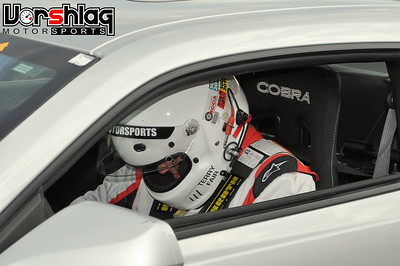
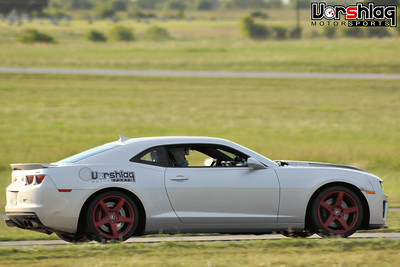
On a track test day in September I drove 3 separate cars over 3 twenty minute sessions. One was the 5th Gen Camaro above, which had Cobra Suzuka racing seats and Scroth harnesses. They held me in easily and it made driving this 3800 pound Pony Car around track a breeze. I got out after that session with a blisteringly fast lap time, which shocked all of us. The car was quick but more importantly, the seats and harnesses let me push the car more easily, so I could wring out more potential from the car. I had more fast laps within a tighter range of time, and exited the car with little wear and tear on my body. Granted this Camaro is not stock, but it is still much heavier and on narrower (305mm Hankook RS3) tires than the two "super cars" below.
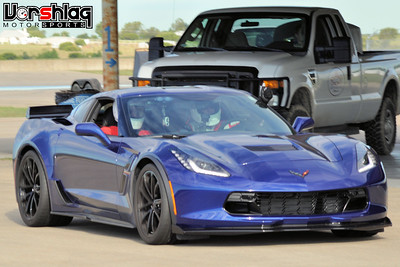
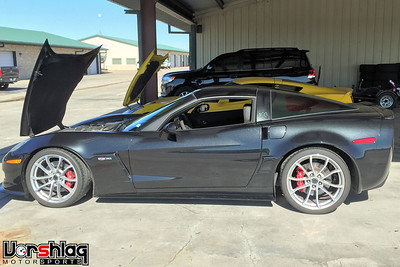
On that same day I also drove these two Corvettes above, both on similar compound but wider tires (285F/335R MPSS) than the Camaro. All three cars made 1.2 to 1.25 g lateral and 1.0 to 1.1 g under braking. The C6 Z06 was a nightmare to drive compared to the Camaro, and I was flailing around in the cockpit like a rag doll. It has one of the worst stock seats I can remember, and my lap times suffered (even 600 pounds lighter and with an LS7 under hood, my Z06 lap times were almost a second slower than the Camaro) with inconsistency. The C7 Grand Sport had optional factory seats that were "better" than the C6 bits, and even has proper shoulder harness holes, but still a 3-point belt. I once again was flopping around and left a lot on the table (according to predictive lap timer), and only had a few laps quicker than the Camaro.
Why? I think it was all in the seats. Good racing seats and harnesses make driving more consistent and easier. I was exhausted after both Corvette stints, and pretty sore the next day. Try putting in "time trial" laps in cars that pull 1.25 g with crap seats and belts, and you'll know what I'm talking about.
continued below